Old World Nostalgia
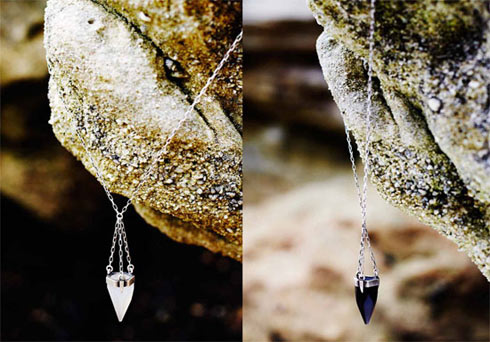
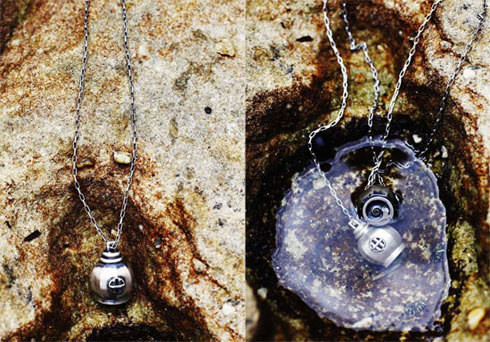
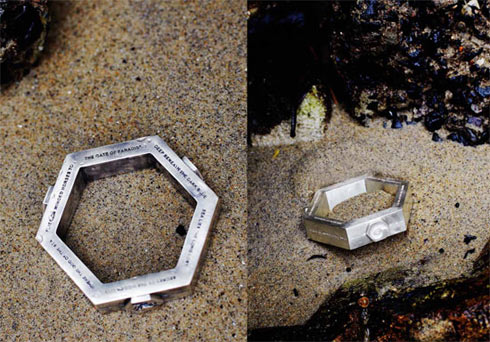
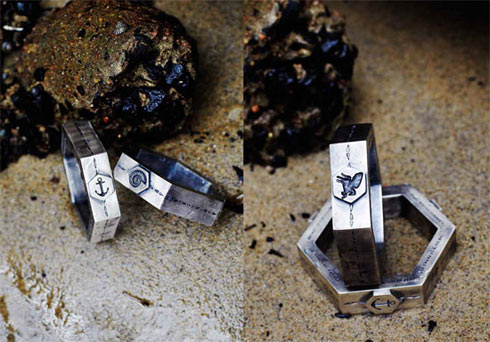
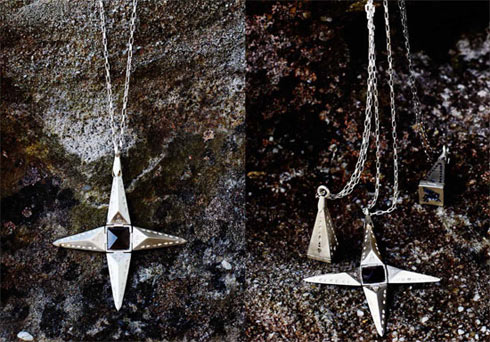
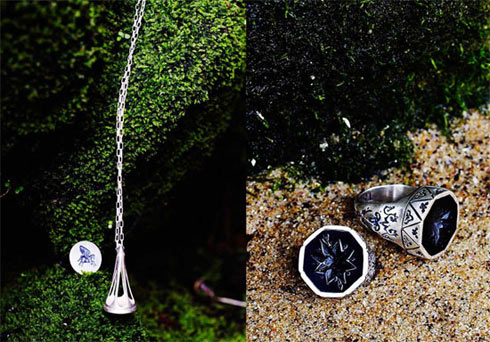
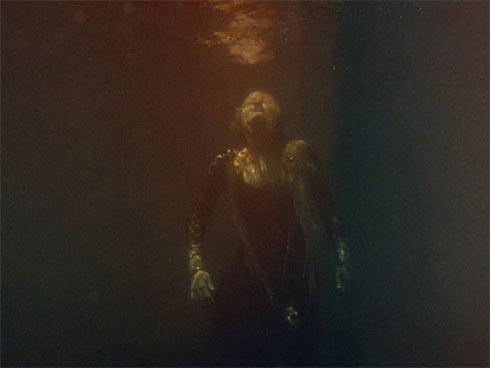 Text: Jill Greig Images: Adrian Mesko
Text: Jill Greig Images: Adrian Mesko
In a field predominantly concerned with innovation and always looking to the future it’s refreshing to know there are still designers around who know that some concepts will never be bettered. TMOD are one such entity, their jewellery lines and scratch cards are reminiscent of a time when we interacted tangibly with the people and objects around us, when user experience counted for more than adhering to tight budgets. Jill Greig catches up with Milenka Osen from TMOD to find out what’s behind their nostalgic offerings.
Jill Greig: You and Georgie went to COFA together. Can you give us a brief history of TMOD?
Milenka Osen: Yeah. We met when we were studying design at COFA, which we finished three or four years ago. We always helped each other, working on each other’s projects. So we just naturally started working together after uni. We got some freelance jobs each and we started helping each other on those. Then we were doing installations for restaurants like the Tilbury Hotel and we both really wanted to do furniture and lighting. Mainly lighting – that’s how we came up with the name Turn Me On Design, because it was about lighting up spaces. So we started designing lighting, but we couldn’t afford to get the moulds made because it was a really expensive starting process.
JG: I can imagine. Then what?
MO: Well we had a little studio garage in Newtown, it had no running water or toilets or anything. But we got this garage and just started trying to design a logo and make stuff to do with the lighting. Then Georgie started fiddling with her charm necklace all the time, which always annoyed me. But from that we came up with the concept to design jewellery and came up with the first range we did, Oh Fiddlesticks. It gave a purpose to fiddling with necklaces, which was interactive games. We started handmaking them at our studio, and then approaching shops and selling the pieces, and that formed a range of jewellery. It was never a plan that we were going to start a jewellery company, but I guess it was something more affordable that we could make ourselves. We started loving it and went from there with the jewellery and everything we did became interactive or creating an experience for the user.
JG: So can I ask you about when you first started out. How difficult was it to establish yourself, to make contacts and find stockists when you’re bringing out your first range?
MO: I guess we didn’t really have the plan to start some big jewellery label, so we were surprised by how easy it was. We actually started at the Finders Keepers Markets, when it used to be Hope Street Markets. The MCA Store approached us there and they were our first stockist. so we were really excited and it gave us the confidence to approach other stores. Then we ended up getting so many orders that we couldn’t actually keep up. Because we were handmaking them each ourselves, we didn’t factor time into the equation when we priced them. We didn’t sleep nights because we’d have to sand layers, varnish them, screw them together. Our hands were bleeding from doing it. We were literally there all night trying to get these orders together. And that’s kind of when for our next range we decided to go to Bali and find a manufacturer and do silver. We learned a lot going to Bali, and we realised that we just couldn’t do it ourselves anymore. I guess because we did get a surprisingly good response. We didn’t have any expectations, it just kind of naturally happened.
JG: That’s really good because obviously you guys have a pretty impressive list of places where your jewellery and other ranges like stationary are stocked. And you’re still in design shops like the MCA, but it’s moved as well into places like Alphaville and The Grand Social and fashion retailers. Were they quick to get on board with the jewellery?
MO: Yeah some of them were. I think we started in Maple in Newtown. I guess it took a bit longer to get those stores. I mean we flew to Melbourne a couple of times to show Fat our range, and then Alphaville took it, which was great. We’ve got Violent Green in Brisbane and Good As Gold in New Zealand. Those kinds of stores have been really loyal and great because they’ve ordered every range consistently. But trying to get the initial meeting with them and showing them your range when they’ve never heard of you is the hardest part because we didn’t have a PR agent or a sales agent, who would usually do all that stuff for you.
JG: So you’ve done it all yourselves.
MO: Yes, we’ve done it all until now. We just got back from Hong Kong where we found a sales agent for Asia and we’ve got one for Japan. And we’ve just had people approach us from Europe and America, so we’re kind of just now taking everything internationally and outside of Australia, New Zealand and Japan, which is where we’ve covered over the last two years.
JG: So how was Hong Kong? What were you guys up to?
MO: Hong Kong was interesting, Georgie got really sick. But we went there because we’re also looking into manufacturing our cards in Hong Kong now.
JG: Is that the scratchie cards or the popup cards?
MO: Probably both. There was a big packaging and paper trade show, which is what we went there for, as well as to find a sales agent and we pretty much achieved both our aims which is good. We haven’t totally decided yet but we got samples of the cards made and they look really good. Basically we’d just been putting them together ourselves at the studio or getting our friends or people we knew – all the cards and the plastic with the sticker and the charm. Because here there’s not one place that you can get the metal charms for the cards and the plastic and everything together and get it packed. So we’re sourcing and making everything in different places.
JG: Which I guess is more expensive and takes more time?
MO: Yeah it’s just the time. Because we did this trade show this year and just picked up 130 new stockists for our cards. And we just couldn’t keep up. I guess we kind of expanded really quickly, which is great, but we don’t want to lose the quality of things, so we’re just trying to find a way to expand it at this rate, which can’t be done at our studio putting cards together ourselves. So that’s why we went to Hong Kong. But then while we were there we found this really great sales agent – and that’s kind of in the making, you know?
JG: Yeah you’re in talks. So obviously at the moment you’re stocked in Singapore, Japan, Hong Kong, New Zealand and Australia and you’re looking to go further. How difficult is it for an Australian designer to break the International market?
MO: I think, I mean we just learnt a lot in Hong Kong, because at the moment we’re really free to do everything on our own timelines and even though obviously our jewellery is fashionable it’s not like fashion where you have to have certain seasons and deliver it to show in fashion week and all these things at certain times. It’s been really flexible. But once you go overseas these agents basically make you fit in with their timelines. So they’ll say, you know you have to have at least four ranges a year, they have to be shown at this time, and production has to be done at this time and I think they’re the things that we’re just considering now because we’ve got an American sales agent that wants things at different times. All the seasons are different. And that’s something that we didn’t really think about before. But I’ve been surprised, I mean I think it’s easy to get overseas, but I guess it’s just finding the right sales agent for your products. There’s so many people doing it and everyone wants exclusivity in a whole country or a whole continent really and then once you sign that away… I think if we were looking for it one or two years ago it would have been hard for us to find someone that actually wanted to take our stuff because Australia’s such a small market and overseas it seems to be so much about pop culture and you really need to get the press and get people wearing your stuff. But no one knows who TMOD is in those countries. So I guess it’s just about finding someone who loves what you do, because our stuff is all about the concepts, it’s not so obvious on a shelf, and we don’t want it just displayed there not in the right context. It’s hard because here we have control, we can see the shops, but there… So I don’t know, I think we’re still in the process, so it’s hard to say. But it’s weird because here we think ‘oh do we want to stock in this shop?’ and we know the shop. But when people (from overseas) email us and say ‘we want to buy this jewellery for our shop, and then their website isn’t up yet and we just don’t know where we’re selling it. We don’t know if that’s a good thing or a bad thing for our brand.
JG: So I guess you guys have got a lot to think about with that, because you’re sort of on the verge of taking the next step. Do you think that you’ve been well received across the countries that you are in now, and you’ve found it relatively easy to get exposure overseas because Australia or specifically Sydney has a reputation for producing good designers?
MO: I guess it’s not that it’s been easy for us, but we’re not trying to rush anything so when things happen we get really excited. We find it easy because we take the opportunities when people approach us to sell our stuff overseas. But I think a lot of people love Australian designers and also there’s a lot of great websites and ways to get our stuff out there. Most of these people haven’t ever seen our products necessarily in real life. Our Japan agent sent us an email and said ‘you know I’m at this shop in Bondi, and I can see your stuff, I’m interested. So it’s not really us contacting people. That’s why it’s good to get your stuff in the right stores and then that’s where a lot of the international people source their things from. So I think it’s been easy for us because we haven’t really had that goal until very recently. We just wanted to get Australia right first.
We did really want to do a trade show this year in New York. But we realised it’s not the best thing to rush everything and we should just do it next year when we get our production and our sampling. I mean we just got back from Hong Kong, and we’re going to Japan in 10 days and we’re doing Finders Keepers Markets this weekend and we’re just starting to wonder where our design time has gone. This is the time we’re usually in our studio designing things and if we put all our energy into trying to sell things overseas it becomes really distracting.
JG: Well you turn into a business instead of designers I guess.
MO: Yeah. And that’s only a recent thing that we’ve got a business manager and started getting people to help us with the business stuff and it started because before we just wanted to design things and not think about those things.
JG: So with your designs, they kind of remind me of toys that I think my granddad might have played with when he was a kid – spinning tops, mazes, the key puzzles. They’re very manual. In the latest range you’ve got wax seals on rings and pendants. It seems very nostalgic. From a designer’s perspective, are you referencing a golden age of design?
MO: Georgie and I are independently inspired by, and we do love nostalgic qualities to design. We’re both obsessed with looking at vintage books and a lot of science books. I think the games started from that initial thing of fiddling, so we looked into old games and puzzles. One of them, the horseshoes (from Smoke and Mirrors) was based on a game Georgie remembered playing with her family when she was young. So I guess that specifically was more nostalgic for her. The charms on the cards was a way of us integrating our jewellery with our stationary. And both of us have a kind of paper and stationary obsession, and we love the seals and signets, so our latest range of jewellery (Lost Secrets) kind of came from that as well. We did a lot of research about concealing secrets and what wax seals were actually used for and through time they’ve been used for so many different things. I’d definitely say we’re inspired by old world objects.
JG: When I looked at the range and saw that it incorporated wax seals I though about how nice it is to receive a letter. I can’t even remember the last time I got a letter in the mail. It’s like a dying art.
MO: That’s what Georgie and I were saying the other day, how no one sends letters anymore. I like how sometimes when our friends see our scratchie cards and say ‘well we wouldn’t usually send a card but because this is something a bit different we want to post it to someone”‘ To me that’s special because I’d much rather receive a card (than an email) and I love writing cards and sending them. I think that’s one sad thing about technology, how everything is on the computer now and it’s not so tactile and personal.
JG: It’s nice to have something tangible.
MO: Yes.
JG: So TMOD has previously collaborated with Andy Uprock on a range of jewellery (Poetry in Braille), and word is you’ve now got something in the works with Kareena Zerefos. Can you tell us a bit about that?
MO: Yes we do – it’s pretty loosely in the works at the moment, but we have sampled a couple of things. It’s going to be a ceramic tea set. We used to share a studio with Kareena and we went to uni at COFA with Kareena as well. We love each other’s aesthetic, so that just kind of happened. She’s doing the illustrating, drawing the forms and doing the 2D side of it, then we’re doing the actual forms. We’re separately really busy with other things, so it’s going be a kind of long-term project. But hopefully by the end of the year we’ll have some samples.
JG: So we won’t expect anything too soon.
MO: No. But we really like working with different people and doing collaborations and we’re getting involved in some other projects at the moment, like there’s ‘Art for Sole’ which is for Ugg Boot Australia. They’re getting all different designers to get a pair of Ugg Boots and do something with it, so we’re in the middle of that project at the moment which is exciting. Then we’re looking to get involved with Creative Sydney in June. The Grand Social is opening a retail store in Darlinghurst, part of that is going to be a gallery space and I think we’re doing one of the first few exhibitions. We really love making things with our hands, so for Finders Keepers this weekend we’re hand scalpelling, making our whole installation out of cardboard for our display. And we really just miss that because a lot of our work now is on the computer, and we wanted to do something artistic as well, without thinking about selling products. So we’re going to do our first exhibition at Edition in June and it’s going to be a paper exhibition, but part of it is going to be mechanical. We’re going to create a whole world out of paper and we’re going to hand scalpel it all! Well that’s the plan at the moment anyway.
JG: So you guys have got a lot coming up.
MO: Yeah we have got a lot coming up. Finders Keepers this weekend, then Japan, then the exhibition and a few other projects. Then we’re going to do the Life and Style tradeshow again in Melbourne this August, which will have our new range of jewellery and our new range of cards, and we’re going to re-release our TMOD puppets.
JG: Beyond that do you think you’ll ever go back to the lighting and furniture you started on?
MO: Yeah we’ve been consistently and slowly doing that across the last two years. So we will release it at some point. We actually came across some new ideas and technologies in Hong Kong. It won’t happen this year, definitely. But we haven’t stopped wanting to do it.
TMOD
Next story: Treasure Island: Daniel Boyd



